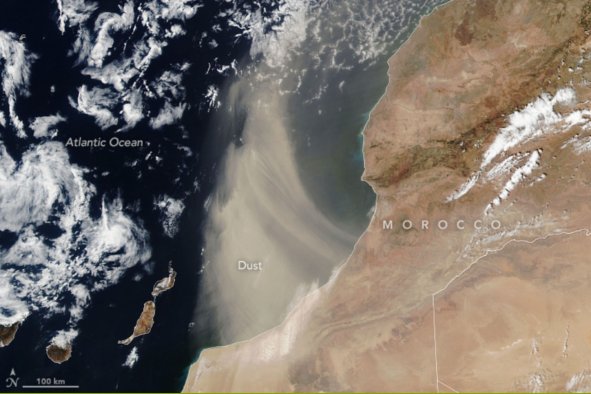Deaths caused by extreme temperatures in the U.S. could potentially triple by mid-century if greenhouse gas emissions are not curbed, researchers suggest.
Cold weather is responsible for more fatalities in the continental U.S. However, as temperatures rise because of climate change, extreme heat is projected to become the dominant temperature-related cause of death.
Extreme temperature deaths are projected to shoot up across the nation, affecting all groups. But certain demographics, including ethnic minorities and the elderly, will be disproportionately impacted, according to a new study published in the journal JAMA Network Open.
"By the middle of the 21st century, although the number of extreme cold-associated deaths is projected to decline, due to the significant increase in extreme heat associated deaths, the overall number of[...]deaths is projected to more than double under the lower emissions increase scenario, or more than triple in the higher emissions increase scenario," the study's lead author, Sameed Khatana, told Newsweek.
"Although some people have suggested that rising temperatures may be beneficial in some ways as cold-related health issues may decline, our analysis suggests that the decline in extreme cold-related deaths may be outweighed by the rise in extreme-heat-related deaths."
The researchers used statistical models to estimate excess deaths on days with extreme temperatures—hot and cold—from 2008 to 2019. During the period, an average of 8,249 deaths annually were associated with extreme temperatures, with 60 percent occurring on extreme cold days.
The study then projected the mortality rates for 2036-2065 under two emissions scenarios: one in which emissions begin to fall around 2050 and another in which global development is driven by fossil fuels through the end of the century. The model also accounted for increases in population across the country.
In both scenarios, average annual deaths associated with extreme temperatures increased drastically, with heat-related fatalities far surpassing those from extreme cold. In the lower emissions scenario, more than 19,000 people are predicted to die annually during the mid-century period. For the higher emissions scenario, the number exceeds 26,500.
Heat is a significant and deadly threat, with previous work by Khatana and colleagues showing it is associated with higher rates of cardiovascular deaths.
"Extreme heat exposure can impact the body in numerous ways that can lead to exacerbations of someone's pre-existing cardiovascular, respiratory or kidney conditions, among others," he said.
The Midwest is expected to be worst hit, with estimated changes in deaths up to 337 percent. In many counties, that represents annual excess deaths upwards of 80 per 1 million residents.
Perhaps most striking was the difference in how extreme temperatures are forecast to affect different demographics. Hispanic and Black populations were found to have disproportionally higher increases in temperature-related deaths, even when accounting for their increasing populations.
Older adults were also found to be at a higher risk, as were populations living in urban centers as opposed to rural areas.
"Although we found that most groups and locations are projected to experience an increase in extreme temperature associated mortality rates, Hispanic and Black adults are projected to have a greater increase compared to non-Hispanic white adults," Khatana said.
That could be for several reasons, Khatana said. Population growth rates and urban concentration play a role, with metropolitan areas having a higher proportion of ethnic and racial minority residents. Those urban areas are expected to see a greater increase in heat-related mortality.
"We also know from some of our previous studies that non-Hispanic Black adults experience a greater increase in mortality associated with heat exposure even currently," he said. "This may in part be due to the fact that neighborhoods with a higher proportion of minority residents tend to have lower tree cover and lower air conditioning access, making the temperature experienced by the people living there higher."
Even areas with near universal access to air conditioning were found to have a high burden of heat-related deaths.
"This finding suggests that there may be a limit to adaptation, especially through increasing air conditioning access," the authors wrote in the paper.
So what can be done? Khatana suggested that more research is needed to examine what measures may be effective at mitigating temperature-related deaths. He also noted that there is already some research suggesting that planting trees in urban centers can help reduce mortality.
"Additionally, our study shows that even though under both emissions scenarios temperature-related deaths are projected to increase, a lower emissions increase scenario was associated with fewer deaths," he said. "This highlights the critical need for a reduction in greenhouse gas emissions."
Do you have a tip on a science story that Newsweek should be covering? Do you have a question about extreme temperatures? Let us know via science@newsweek.com.
References
Khatana, S. A. M., Szeto, J. J., Eberly, L. A., Nathan, A. S., Puvvula, J., & Chen, A. (2024). Projections of Extreme Temperature–Related Deaths in the US. JAMA Network Open, 7(9). https://doi.org/10.1001/jamanetworkopen.2024.34942
Khatana, S. A. M., Eberly, L. A., Nathan, A. S., & Groeneveld, P. W. (2023). Projected Change in the Burden of Excess Cardiovascular Deaths Associated With Extreme Heat by Midcentury (2036–2065) in the Contiguous United States. Circulation, 148(20), 1559–1569. https://doi.org/10.1161/CIRCULATIONAHA.123.066017
Disclaimer: The copyright of this article belongs to the original author. Reposting this article is solely for the purpose of information dissemination and does not constitute any investment advice. If there is any infringement, please contact us immediately. We will make corrections or deletions as necessary. Thank you.



